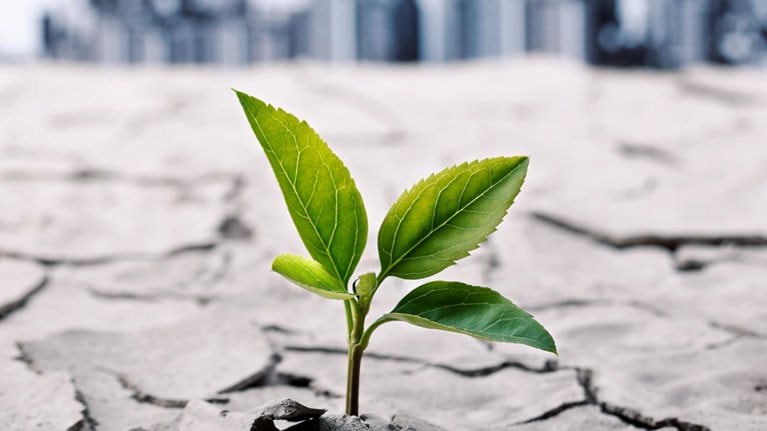Amid mixed economic data, signs of slowing growth are proliferating. High inflation is eroding household budgets, leading to a decline in consumer sentiment and, outside the United States, static or declining retail sales in real terms. Production is flattening under persisting supply chain pressures, high input costs, and softening demand. Investor uncertainty over rising interest rates is roiling financial markets. In the US economy, GDP contracted –0.6% on an annualized basis in the second quarter of the year, following a retreat of –1.6% in the first quarter. GDP growth in China was 2.5% in the first half of 2022 but slowed to 0.4% in the second quarter, with output constrained by pandemic restrictions, softer external demand, and the financially troubled real-estate sector.
In the eurozone, GDP growth outpaced expectations at 0.6% in the second quarter and 1.1% for the first half. The growth calculus for the coming quarters is unusually fraught. The European Union (EU) as a whole faces critical energy uncertainty in the near term, brought on by Russia’s invasion of Ukraine. Before the invasion, Russia was the EU’s main supplier of crude oil, natural gas, and solid fossil fuels. Since the invasion, the EU has incrementally moved toward independence from Russian energy products. The policy has resulted in sharp price rises in electricity. On August 26, Europe’s benchmark natural gas price reached €343 per megawatt-hour, 30 times the level of two years ago. European leaders are discussing a number of solutions. Immediate remedies under consideration are fuel rationing, the decoupling of electricity from gas prices, and other energy market reforms including price caps. Economists are warning of at least one difficult winter ahead; overall growth estimates for the EU are being trimmed in light of a potential energy shortfall.
The climate crisis has also made itself felt in Europe, as it has in China, with severe summer heat waves and droughts. In both regions, the disrupted environment has curtailed hydropower and manufacturing. Agricultural production in the Yangtze River basin, home to 450 million people, is also threatened, and Sichuan Province, the largest producer of hydropower in China, cut output by 50% in August. In other areas, Pakistan is experiencing a national emergency as heavy monsoon rains destroyed hundreds of thousands of homes and millions of acres of crops. Fifteen hundred miles away in the Horn of Africa, the UN reports that 50 million people in Ethiopia, Kenya, and Somalia suffer from “acute food insecurity,” as the region endures its longest drought in 40 years. The damage wrought by the extreme conditions has been the greatest in the places least able to respond; no region, however, is escaping the effects of the general environmental disruption.
Global indicators are reflecting the general slowdown, with a noticeable time lag, as disruptions crowd one upon the other. The OECD global consumer confidence indicator worsened in July, marking a 14-month slide to its lowest-ever level. Except in the United States, where retail sales clearly improved, consumer spending in surveyed economies was flat or declining in real terms (even where nominally higher due to inflation) (Exhibit 1).

A slower growth pace is also reflected in the OECD economic growth indicators, both in the global metric and in those for individual economies.
Global purchasing managers’ indexes (PMIs) for both manufacturing and services slowed in July while remaining mildly expansionary (51.1 for both indicators). Among surveyed economies, manufacturing PMIs show the sector slowing in July, except in Brazil (54.0) and India (56.4). August estimates are nearly flat on either side of the contraction mark (50), with the United States estimate at 51.3 and the eurozone estimate at 49.7. The PMIs for the services sector are more robust, though the indicator was lower in July for most economies, as companies face higher input costs and softening demand.
For July, individual surveyed economies generally reported exports growth; imports were static in the United States and the eurozone but expanded in China and India. The lagging global indicators show uneven improvement in trade. In June, the CPB World Trade Monitor measured world trade volumes roughly equal to those of May, when trade improved 2.5%; overall second-quarter trade growth was 0.8%. The Container Throughput Index, meanwhile, improved to 126.1 in June (124.9 in May), as Chinese ports strongly rebounded and traffic in European ports declined (Exhibit 2).

The Supply Chain Pressure Index kept by the New York Federal Reserve reports an easing of pressure due to softening demand and improved freight capacity. The index was at 1.84 at the last reading (July 31), still well above average but down from 2.31 in June (Exhibit 3).

One source of the pressure, sea freight rates, increased sharply over the past two years, as pandemic restrictions and new demand vexed the global supply chain (Exhibit 4).

Unemployment rates have been low across surveyed economies, with near-historic lows in the United States (3.5%) and the eurozone (6.6%).
In July, consumer inflation reached 8.9% in the eurozone and declined in the United States to 8.5%, from 9.1% in June. In emerging economies, consumer inflation also declined, including in Brazil (10.1%) and India (6.7%). In China, inflation ticked up to 2.7% (2.5% in June) (Exhibit 5).

For the US economy, inflation has been at or near its highest level since 1980. The US Federal Reserve consequently began its tightening course, making policy interest rate hikes in April (25 bp), May (50 bp), June (75 bp), and July (75 bp). The Fed Funds rate now stands at the range of 2.25 to 2.5%. At a late-August meeting, furthermore, Fed chair Jerome Powell stated that further hikes would come as needed, while admitting that the struggle to steer inflation toward the Fed’s 2% target could set off a sustained period of slow growth.
Prices for many commodities were stable or lower in August; prices declined for many inflation drivers, including industrial metals and agricultural and energy products. Natural gas was a signal exception, especially in Europe, as political tensions drove prices higher. Food prices declined, but business analysts warn that the dangers of shortages and future increases remain.
Inflation expectations, as reflected in the yield spread of US Treasury products, eased somewhat but are still at elevated levels. Equity markets in most surveyed economies performed poorly in July but were on the rebound in August. Whether the US equity market slide at the end of August will begin a general trend remains to be seen, but higher interest rates can be expected in the inflationary environment.
The US dollar remained strong in August, at or near parity with the euro. Government bond yields generally retreated in August; the yield spread between Italian and German bonds has topped 3% (August 26).
Inflation, energy, and a residential property crisis: Noteworthy from the full Global Economics Intelligence release for August 2022
The United States. The policy struggle against inflation is ongoing. On July 27, the US Federal Reserve made a second consecutive 0.75% hike in the federal funds target rate, bringing it to a range of 2.25 to 2.50%, its highest level since December 2018. The Fed target for inflation remains 2.0%, with some upward leeway to favor full employment. From a historical perspective, the danger increases that further rate hikes could set off a recession; the postpandemic environment, however, is uncharted territory. At the Fed’s annual conference on August 26, Powell emphatically stated that the Fed will act vigorously to bring down inflation and warned of a “sustained period” of slower growth. A decision on a third consecutive rate hike will be reached at the next policy meeting on September 21.
Eurozone. Uncertainty in the energy supply has become a major concern, as strictures against Russian energy products take hold. EU buyers ramped up purchases of seaborne Russian crude oil in July and August, ahead of a ban set to begin in early December. In August, the baseload power delivery price for Germany for 2023 climbed above €500 per megawatt hour—a record level for this forward-curve benchmark metric and six times higher than the level of a year ago. Germany is among several European countries that have been most dependent on natural gas from Russia. In August, flows from the Nord Stream 1 pipeline were at 20% of capacity. Germany has purchased gas from other sources, including Norway, stabilizing supply for now.
China. The residential property crisis continues, with some buyers of unfinished homes refusing to pay mortgages. As reported in Chinese news sources, local governments and the central bank intervened, and troubled developers, including Evergrande, have restarted construction at several large projects. In managing the crisis generally, however, the central government has taken only limited measures (such as small interest rate cuts). Investors in offshore bonds issued by Chinese real-estate groups reportedly expect massive losses. The implications of the real-estate crisis are significant, as the sector has lately accounted for one-quarter of China’s economic activity.
McKinsey’s Global Economics Intelligence (GEI) provides macroeconomic data and analysis of the world economy. Each monthly release includes an executive summary on global critical trends and risks, as well as focused insights on the latest national and regional developments. View the full report for August 2022 here and here. Detailed visualized data for the global economy, with focused reports on selected individual economies, are also provided as PDF downloads on McKinsey.com. The reports are available for free to email subscribers and through the McKinsey Insights app. To add a name to our subscriber list, click here. GEI is a joint project of McKinsey’s Strategy & Corporate Finance Practice and the McKinsey Global Institute.


